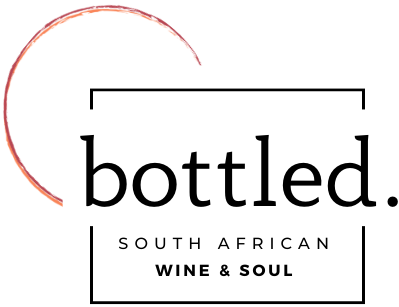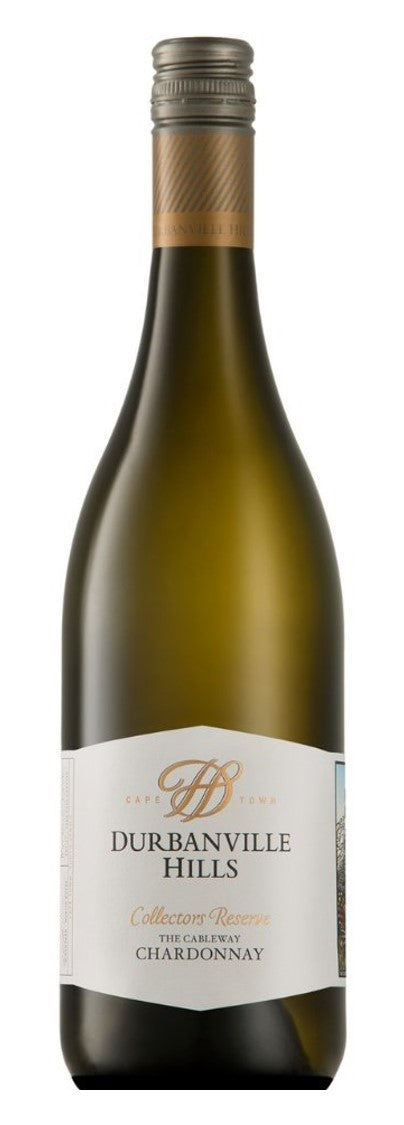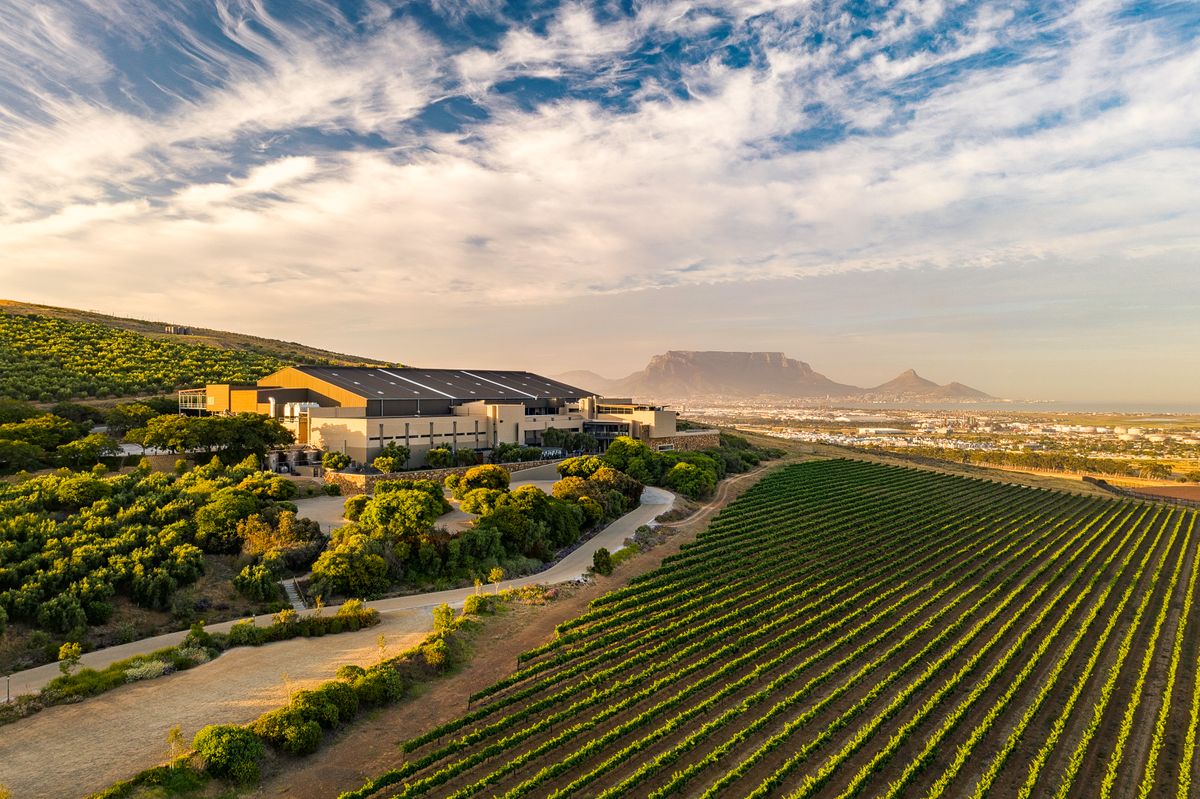
Straight to the tears?
Durbanville Hills
Characteristics
growing area
Durbanville
philosophy
Historic Wineries Break New Ground: The Durbanville Hills Winery was designed and built as a joint venture with one goal in mind: to produce a premium wine from premium grapes .
"The story of a great wine begins with the conversations it sparks long before it even exists. Such a wine tells the story of the vineyard , the grapes and the winemaker's special touch ."
"Durbanville Hills is a book full of such wine stories that confidently and proudly embody their origins. "
Cultivation Info
Size: 55 ha
Bottoms: vary
Annual precipitation: 400mm
Durbanville Hills Wines sources its grapes from a coalition of historic small farms, most established at the turn of the 17th and 18th centuries.
The hills of Durbanville rise above the surrounding flat landscape, which is practically at sea level. In the early morning hours they are often shrouded in fog. Together, these hills and valleys offer an almost infinite variety of slopes, soil types and microclimates, making it possible to grow a range of classic grape varieties.
The Durbanville area is one of the coolest wine regions in the Cape Winelands, thanks to alternating southeast (summer) and northwest (winter) winds. It rains little, but the deep, well-structured soils are able to absorb and store water efficiently, so that the vines are adequately supplied with water in the dry summer months.
Knowing exactly what to expect from each block, the winemakers are able to craft a unique style that not only reflects the diversity of Durbanville, but also blends Old World elegance with outspoken New World fruitiness.
Winemakers & team
Cellar Master: Martin Moore
Winemaker / white wine expert: Kobus Gerber
Winemaker / expert for red wine: Wilhelm Coetzee
Assistant Winemaker: Jenna Higgins
Cellar master Martin relies on state-of-the-art cellar technology to ensure optimal extraction of color and taste. Sustainable practices include compliance with international environmental standards, treatment of wastewater to irrigation quality
and vineyards planted according to IPW (Integrated Production of Wine) cultivation practices aimed at preserving natural resources.
Leopard or Tiger?
The first settlers, settling here in the mid-16th century, chose Leopard - more specifically " Gevlekte Luipaartsberg " (Spotted Leopard Mountains) as the rolling hills covered with native shrubs recalled the pattern of leopard skins.
Thanks to the resident freshwater spring and the flat, well-managed landscape, the area around the Leopard Mountains quickly became a popular meeting place and resting place for travelers and sailors to replenish their food and water supplies. The source is still there today, because in addition to raising cattle and growing grain, some farmers decided to grow and sell wine as early as 1702 - including one of the oldest founding members of Durbanville Hills, the Klein Roosboom wine farm, which was established in 1714 and on whose property the old source lies.
The small village grew steadily and so the name of the landscape changed:
Leopard Mountains became Tiger Mountains ( Tygerberg , as the area is still called today) and finally from 1886 officially: Durbanville .
In the late 1990s, the local, small wine farms came up with the idea of joining forces and producing wines under a common name that represent the diversity of the region and the characteristics of the individual growing areas:
Just the best of all ! Together with a local distributor, Durbanville Hills was created, which brought the first vintage from 1999 to the market in 2011. The original 7 founding members Klein Roosboom, Ongegund, Hillcrest, Maastricht, Morgenster, Bloemendal and Hooggelegen have now been joined by two more members: Welbeloond and De Grendel.
Durbanville Hills Wines is now a young joint venture with a rich winemaking history dating back to the late 17th century. The winery is a state-of-the-art facility that rivals the best in the world .
An absolute personal favorite is The Collectors Reserve - a unique range made from the finest grapes from Cape Town's finest vineyards. To truly connect the Winelands and the city, prominent Cape Town landmarks have been combined with the characteristics of the growing region and transferred to the bottle labels by local artist Theo Vorster. A real (eye) feast for wine and art lovers! we love ♥
Impressions of the winery
-
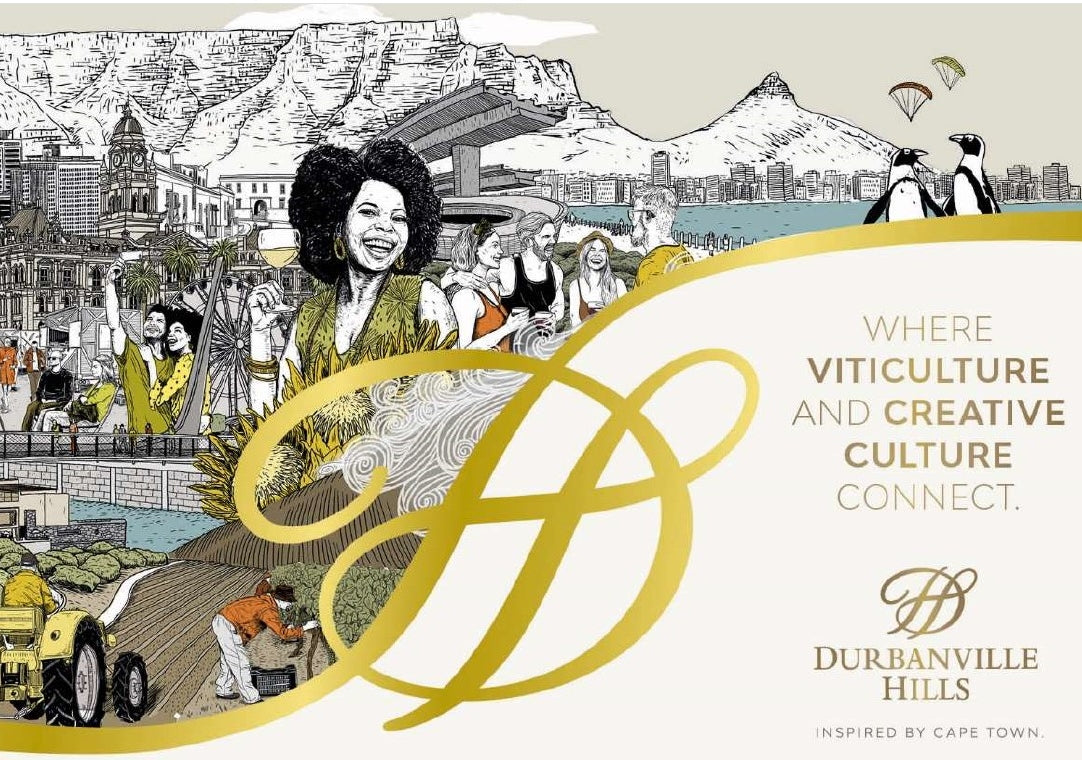
Creativity meets (wine) culture: The Collector's Reserve series is colorful and unique on the bottle labels - perfect for collectors! Gotta catch 'em all ;)
-
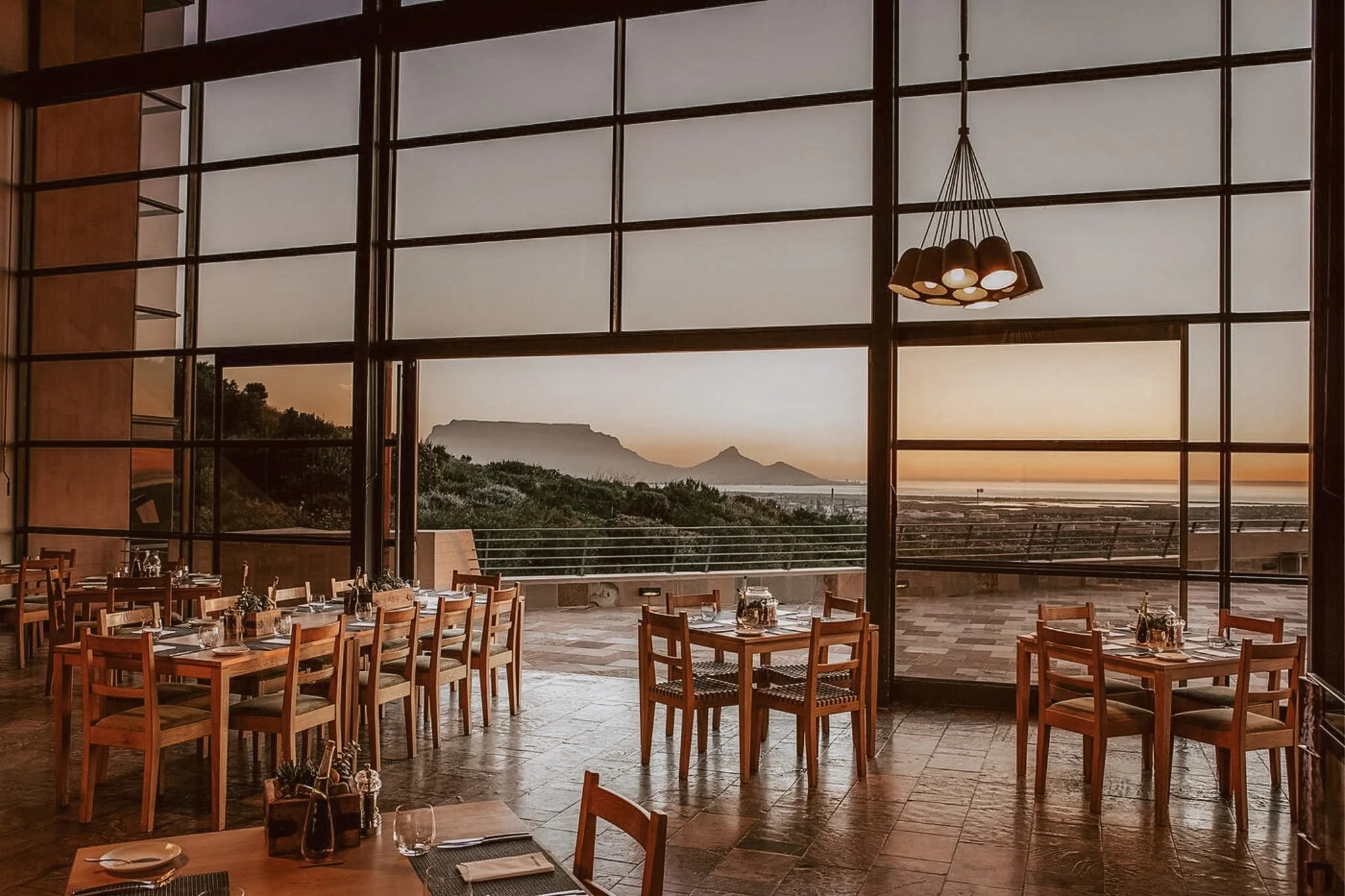
Not only the wines are premium: the Tangram restaurant has received several awards and offers a beautiful view!
-
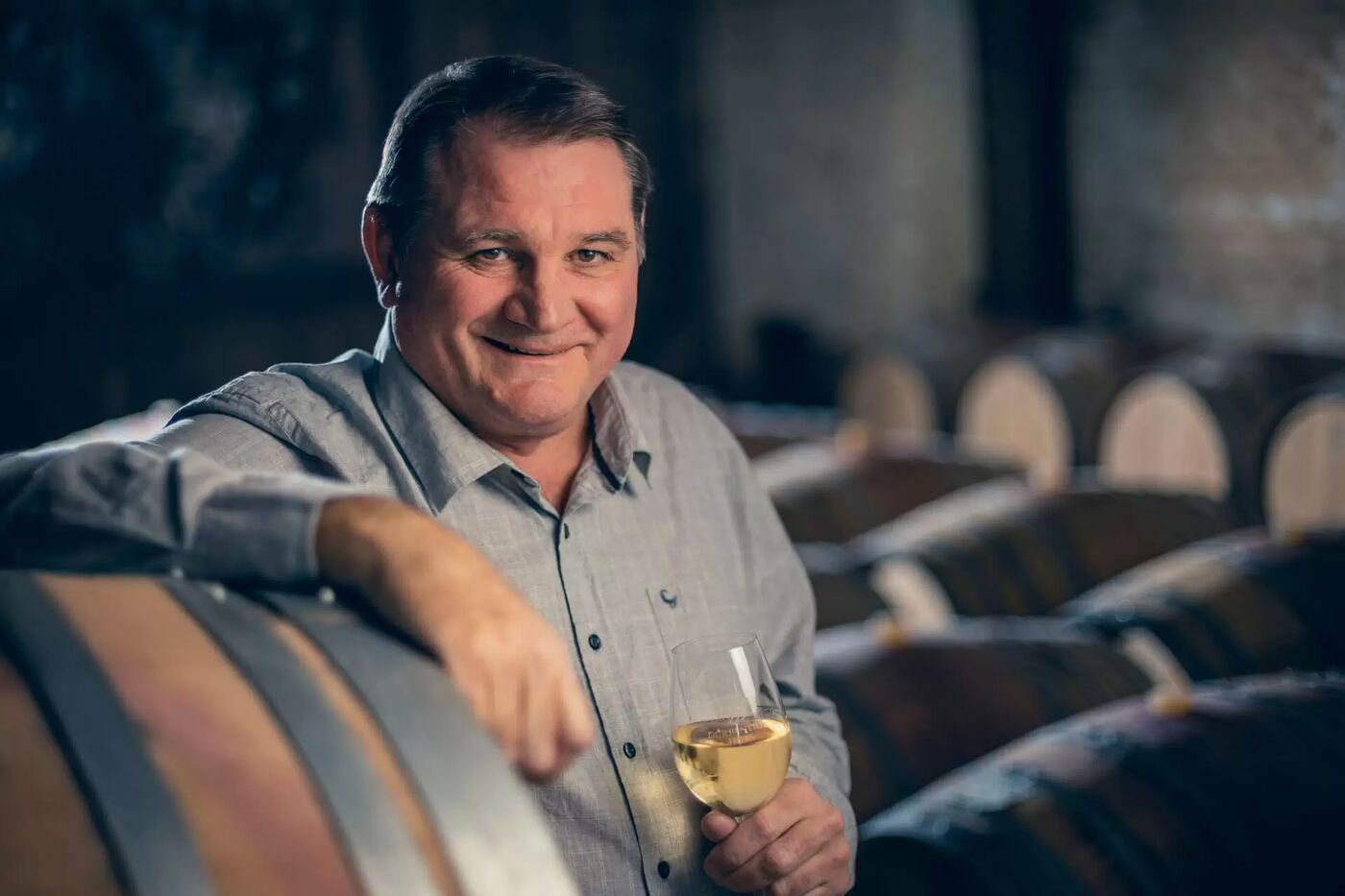
Cellar Master Martin is a passionate ambassador for the unique location of the Durbanville Hills and their influence on the wines.
Wines from Durbanville Hills
-
Collectors Reserve - Pinotage 2019/20
Vendor:Durbanville HillsRegular price €16,90 EURRegular priceUnit price / per -
Collectors Reserve - Sauvignon Blanc 2021
Vendor:Durbanville HillsRegular price €15,90 EURRegular priceUnit price €21,20 / per l -
Collector's Reserve - Chardonnay 2022
Vendor:Durbanville HillsRegular price €15,90 EURRegular priceUnit price €21,20 / per l -
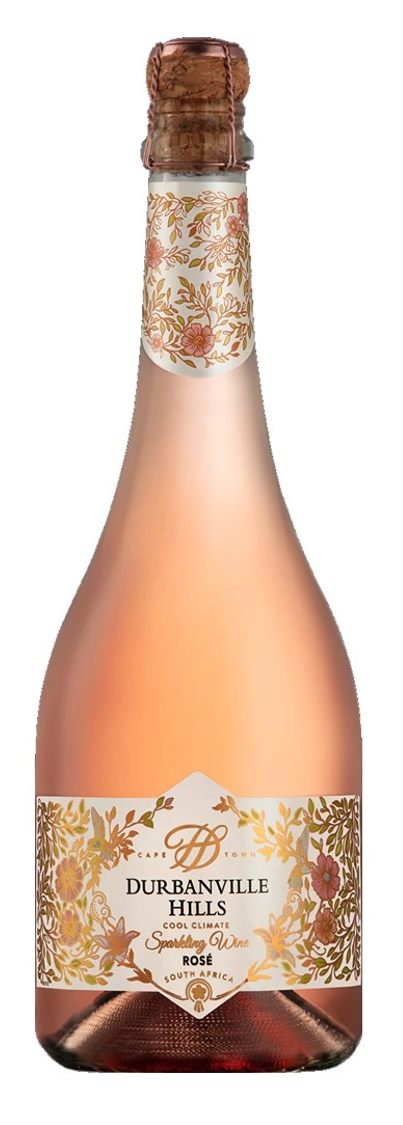 Sold out
Sold outSparkling Rosé
Vendor:Durbanville HillsRegular price €14,50 EURRegular priceUnit price €19,33 / per l -
 Sold out
Sold outSparkling Sauvignon Blanc
Vendor:Durbanville HillsRegular price €14,50 EURRegular priceUnit price €19,33 / per l

